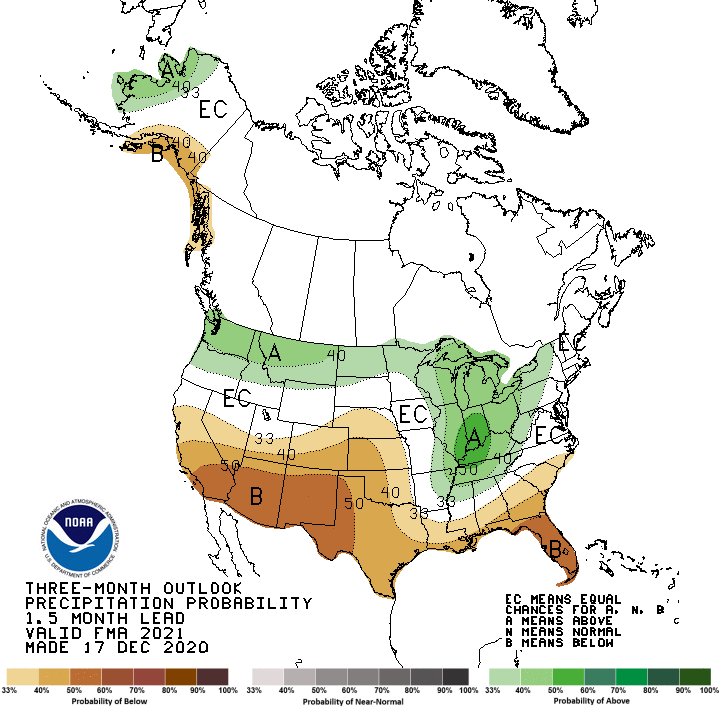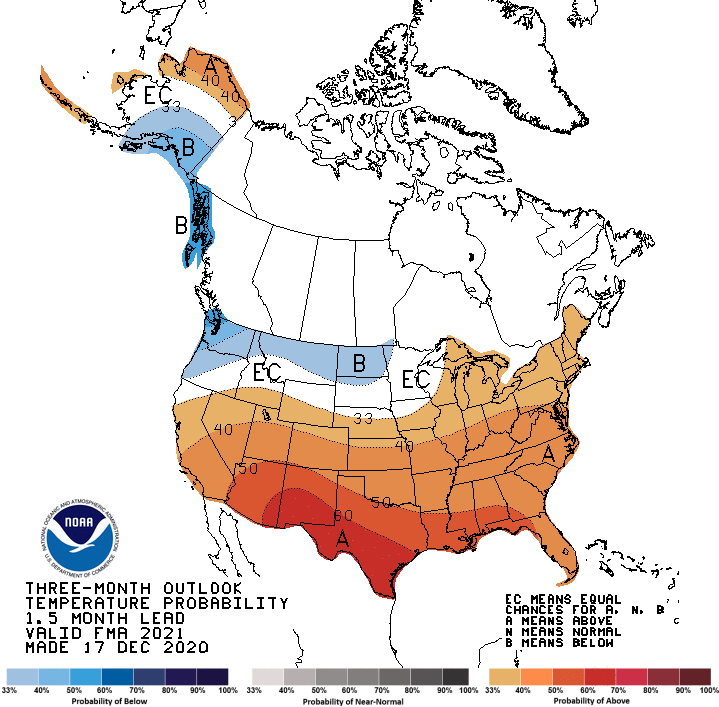Ask anyone who cares about deer in Southeast Alaska, and they’ll tell you: snow is bad for deer numbers. Ask the deer themselves, using pellet DNA, or GPS collars and monitoring for mortality, and they’ll tell you the same.
A buck walks by a trail cam in early winter. Photo: Jim Baichtal.
That’s why when we saw back in November that this winter was forecast to potentially be a La Nina, we understood that there was therefore a possibility it could be a “deer killer” winter. But across much of Southeast, deep snow has yet to materialize, so it remains uncertain how much the weather this year will affect the deer. Increasingly, it looks like there’s a good chance for colder-than-average temps to develop over the next three months, but likely accompanied by drier-than-average conditions, so it’s very unclear how much actual snow will result (less precip actually falling, but falling as snow when it does come, seems to be the best guess).
As we watch and wait to see what mother nature will bring, we thought we’d share some of what the research shows in terms of winter’s effects on Sitka black-tails.
Luckily, there’s some recent research on this topic from 2 projects using a couple of different methods to track the response of deer to the environment.
The first project was undertaken by Dr. Todd Brinkman, who at the time was a graduate student at the University of Alaska Fairbanks (where he is now a professor).



